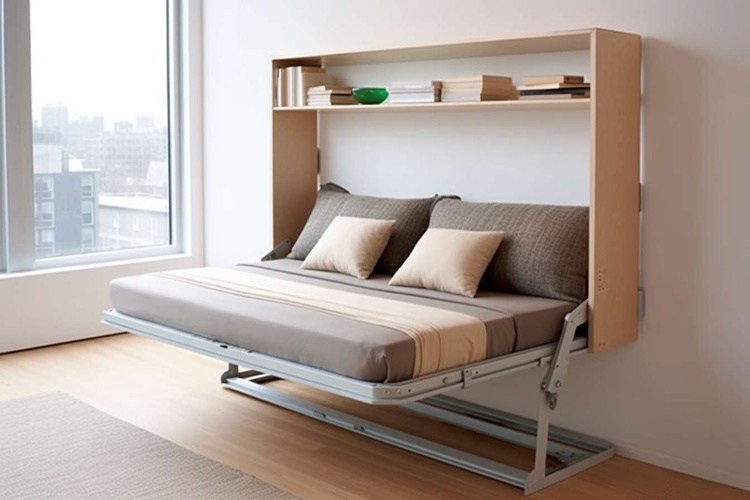Title: Micro-Apartments: Redefining Urban Living Spaces
In the heart of bustling metropolises, a quiet revolution is unfolding in the realm of real estate. Micro-apartments, compact living spaces typically under 400 square feet, are reshaping urban housing landscapes. This innovative approach to city dwelling is gaining traction, with New York City reporting a 18% increase in micro-unit developments over the past year. As populations grow and urban centers become increasingly dense, these miniature abodes offer a fresh perspective on efficient living, challenging traditional notions of home and sparking a new dialogue about the future of urban real estate.

Historical Context and Urban Evolution
The roots of micro-living can be traced back to the early 20th century when urbanization led to the development of efficiency apartments in major cities. These predecessors to modern micro-units were designed to accommodate the influx of single workers moving to industrial centers. Fast forward to the present day, and the micro-apartment trend has been reinvented to address contemporary urban challenges. Factors such as rising real estate costs, changing demographics, and a growing emphasis on sustainable living have all contributed to the resurgence of compact housing solutions.
Economic Implications for Real Estate Markets
The introduction of micro-apartments into urban real estate markets has far-reaching economic implications. For developers, these units offer higher potential returns per square foot compared to traditional apartments. A recent study by the Urban Land Institute found that micro-units can yield up to 30% more rent per square foot than conventional apartments in the same area. This attractive profit margin has led to increased investment in micro-apartment developments, particularly in high-cost cities where land is at a premium.
Design Innovations and Space Optimization
At the heart of the micro-apartment movement is innovative design. Architects and interior designers are pushing the boundaries of space utilization, creating living environments that are both functional and aesthetically pleasing. Features like floor-to-ceiling storage, loft beds, and modular furniture are standard in these compact homes. Some developers are even incorporating smart home technology to further enhance the living experience. For instance, a micro-apartment complex in Seattle boasts units with voice-activated controls for lighting, temperature, and entertainment systems, maximizing comfort within a minimal footprint.
Target Demographics and Changing Lifestyles
Micro-apartments appeal to a specific demographic, primarily young professionals, students, and individuals who prioritize location over space. These residents often lead busy, urban-centric lifestyles and view their homes as a base for sleeping and basic living functions rather than a space for entertaining or extensive relaxation. The growing acceptance of minimalism and the tiny house movement has also contributed to the appeal of micro-living. A survey conducted by the National Apartment Association revealed that 72% of millennials would consider living in a micro-unit to be in a desirable location.
Challenges and Criticisms
Despite their growing popularity, micro-apartments are not without controversy. Critics argue that these units may lead to overcrowding and potentially compromise quality of life. There are concerns about the long-term psychological effects of living in such confined spaces, with some experts warning of potential issues related to claustrophobia and social isolation. Additionally, zoning laws in many cities have not kept pace with this housing trend, creating regulatory hurdles for developers seeking to build micro-unit complexes.
Impact on Urban Planning and Infrastructure
The proliferation of micro-apartments is influencing urban planning strategies and infrastructure development. Cities are reassessing zoning regulations to accommodate these new housing types while ensuring adequate living standards. For instance, New York City launched a pilot program to test the viability of micro-units, relaxing certain zoning restrictions to allow for their construction. This shift is also prompting cities to rethink public spaces and amenities, as residents of micro-apartments often rely more heavily on shared community areas and urban facilities.
Future Outlook and Market Predictions
As urban populations continue to grow and housing affordability remains a pressing issue, the micro-apartment trend is poised for further expansion. Market analysts predict a compound annual growth rate of 7% for the micro-housing sector over the next five years. This growth is expected to be particularly strong in gateway cities and emerging tech hubs where housing demand outstrips supply. However, the future success of micro-apartments will depend on their ability to adapt to changing resident needs and overcome regulatory challenges.
Conclusion: A New Chapter in Urban Real Estate
Micro-apartments represent more than just a housing trend; they embody a shift in how we conceptualize urban living spaces. As cities grapple with density, affordability, and sustainability, these compact dwellings offer a potential solution that aligns with modern lifestyles and economic realities. While not without challenges, the rise of micro-apartments signals a dynamic evolution in the real estate market, one that may well reshape the urban landscape for generations to come. As this trend continues to unfold, it will undoubtedly present new opportunities and considerations for investors, developers, and urban planners alike.





